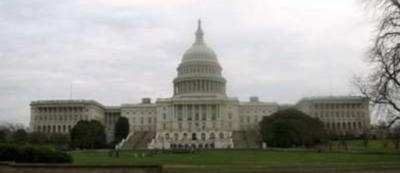Rockefeller: 'The Aviation Sector Has A Substantial Impact On Our Economy'
A Senate Commerce Subcommittee held a hearing Wednesday focusing on competitiveness of the U.S. Aviation Industry, which included testimony from industry groups like A4A and GAMA.

"By any measure, the aviation sector has a substantial impact on our economy," said full committee chair John D. "Jay" Rockefeller IV (D-WV) in his opening remarks. "The Federal Aviation Administration (FAA) estimates civil aviation supports more than 10 million jobs nationally and is responsible for more than 5 percent of the nation’s Gross Domestic Product (GDP). It is also a leading source of U.S. exports, contributing over $75 billion toward the nation’s trade balance through the sale of civilian aircraft engines, equipment and parts to foreign entities.
"Just as important, aviation plays a critical role in facilitating our nation’s commerce by connecting all regions of our country together, and our businesses to the global marketplace," Rockefeller continued. "It is the mode of transportation that makes it possible for consumers to order products online and receive them in the mail the next day, pharmaceutical companies to deliver critical drugs or devices anywhere overnight, and for businesses to send employees to the other side of the globe in a day." He said that he has long been a strong proponent of the Essential Air Services and Airport Improvement Programs.

A4A president and CEO Nicholas Calio (pictured) said the Senate should support a National Airline Policy in order to keep U.S. airlines competitive with foreign carriers, achieve sustained profitability and add highly skilled, technical jobs in the United States.
"Airlines enable their local businesses to export goods, connect their residents to the world for business and leisure travel–and, importantly, create good-paying jobs," Calio said. "We face the very real risk of U.S. airlines increasingly shifting to feeding foreign airlines at our gateways, rather than expanding their flying of lucrative international routes."
Calio detailed how passenger and cargo airlines provide a tremendous value for American businesses and consumers, and enable the U.S. economy. In 2011, the value of U.S. exports by air was 117 times the value of exports transported by sea. Commercial aviation has grown to become one of the most important drivers of U.S. gross domestic product (GDP) and today U.S. airlines carry about 2 million passengers and 50,000 tons of cargo daily on approximately 28,000 flights.
However, for years U.S. airlines have operated under a tax, regulatory and infrastructure environment that has made it increasingly difficult to make be sustainably profitable and compete globally. If the airline industry continues to lose ground to foreign competitors, it will take a toll on the larger economy, Calio said. U.S. airlines already have reduced capacity to some international markets – the most profitable part of the business – and to a great degree, the part that subsidizes many domestic routes, particularly service to the smaller communities.
In order to stay competitive and drive further economic growth, A4A outlined the need for a National Airline Policy, which would have five core elements:
Address the rising tax burden
- Reduce the industry's regulatory burden
- Expedite implementation of a satellite-based air traffic management system
- Expand access to global markets
- Enable the U.S. airline industry to attract investment

GAMA president and CEO Pete Bunce (pictured) underscored several items that are key to the success of aviation manufacturing, including improving the Federal Aviation Administration (FAA) product certification process, addressing airspace management and aviation infrastructure issues in emerging aviation markets, and making key investments in research and development and workforce training in the United States.
"GAMA commends the leadership of the Subcommittee for convening this hearing which is of vital importance to the competitiveness of the aviation manufacturing industry," said Pete Bunce, GAMA's President and CEO. "We appreciate the fact that the hearing highlighted so many issues that GAMA believes are key to the future growth of GAMA companies. We look forward to continuing to work with the Subcommittee on initiatives that will lead to a stronger general aviation industry and also increased job opportunities for our citizens."
 Sierra Space Repositions Dream Chaser for First Mission
Sierra Space Repositions Dream Chaser for First Mission ANN's Daily Aero-Term (05.10.24): Takeoff Roll
ANN's Daily Aero-Term (05.10.24): Takeoff Roll Aero-News: Quote of the Day (05.10.24)
Aero-News: Quote of the Day (05.10.24) Aero-News: Quote of the Day (05.11.24)
Aero-News: Quote of the Day (05.11.24) ANN's Daily Aero-Term (05.11.24): IDENT Feature
ANN's Daily Aero-Term (05.11.24): IDENT Feature





